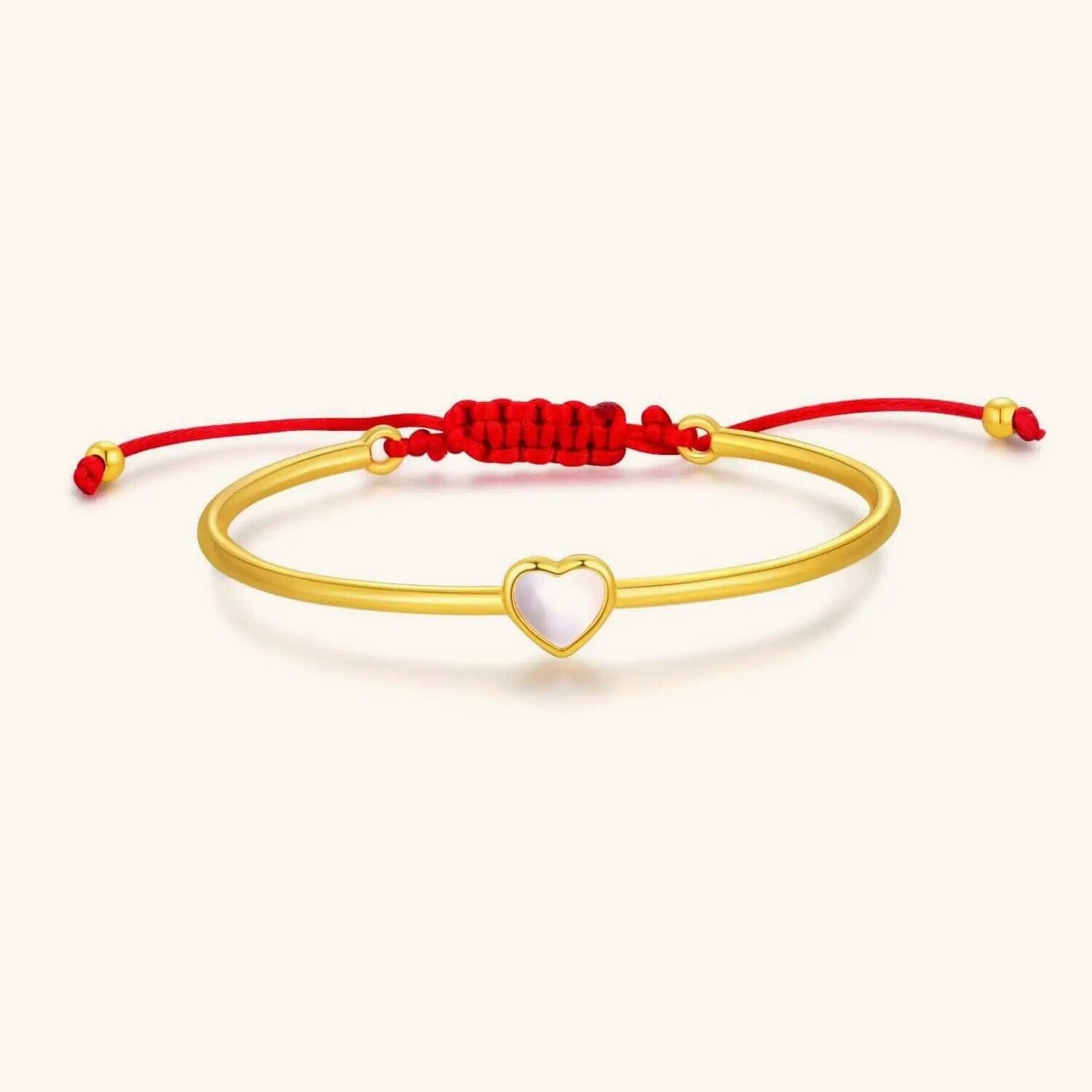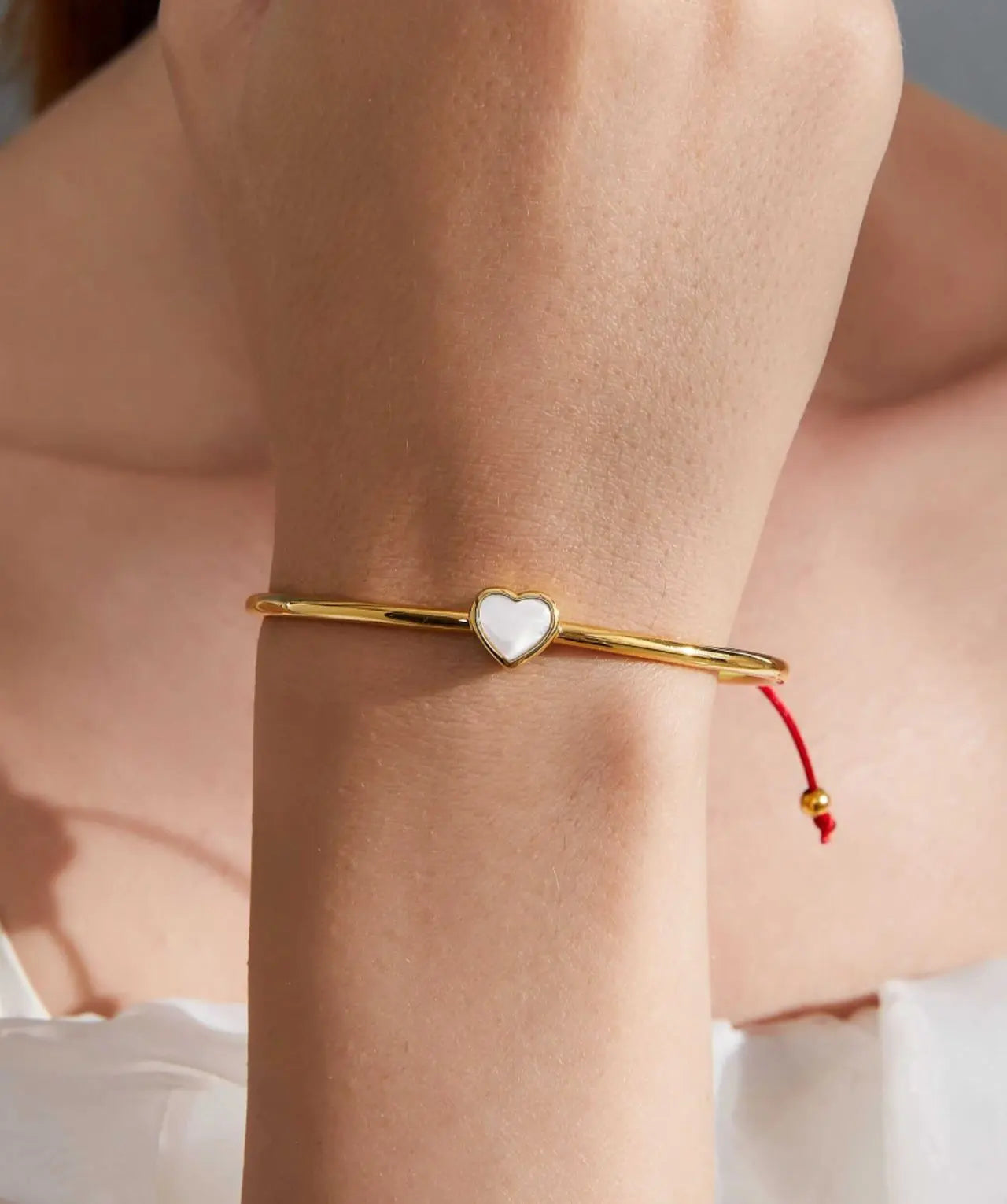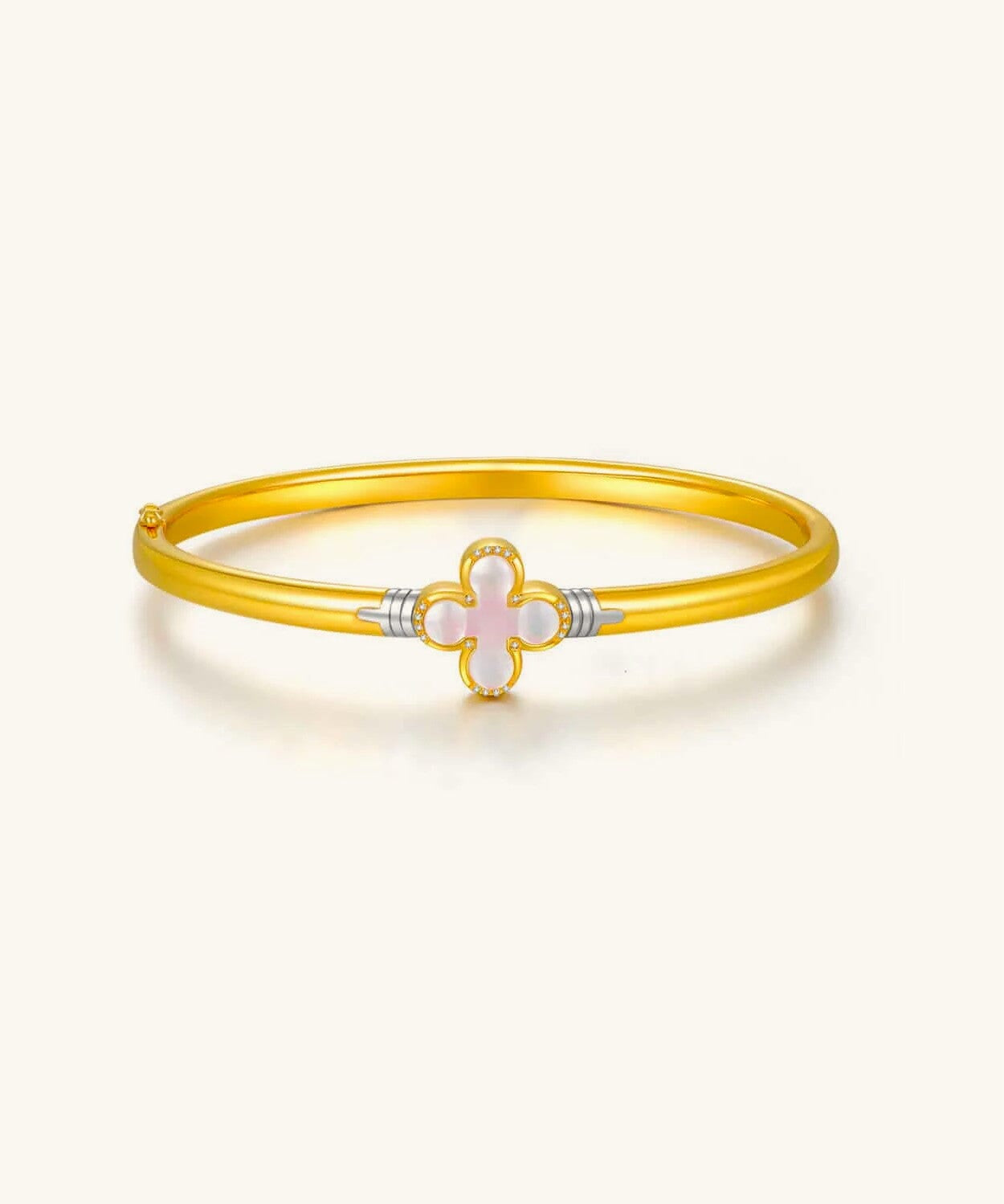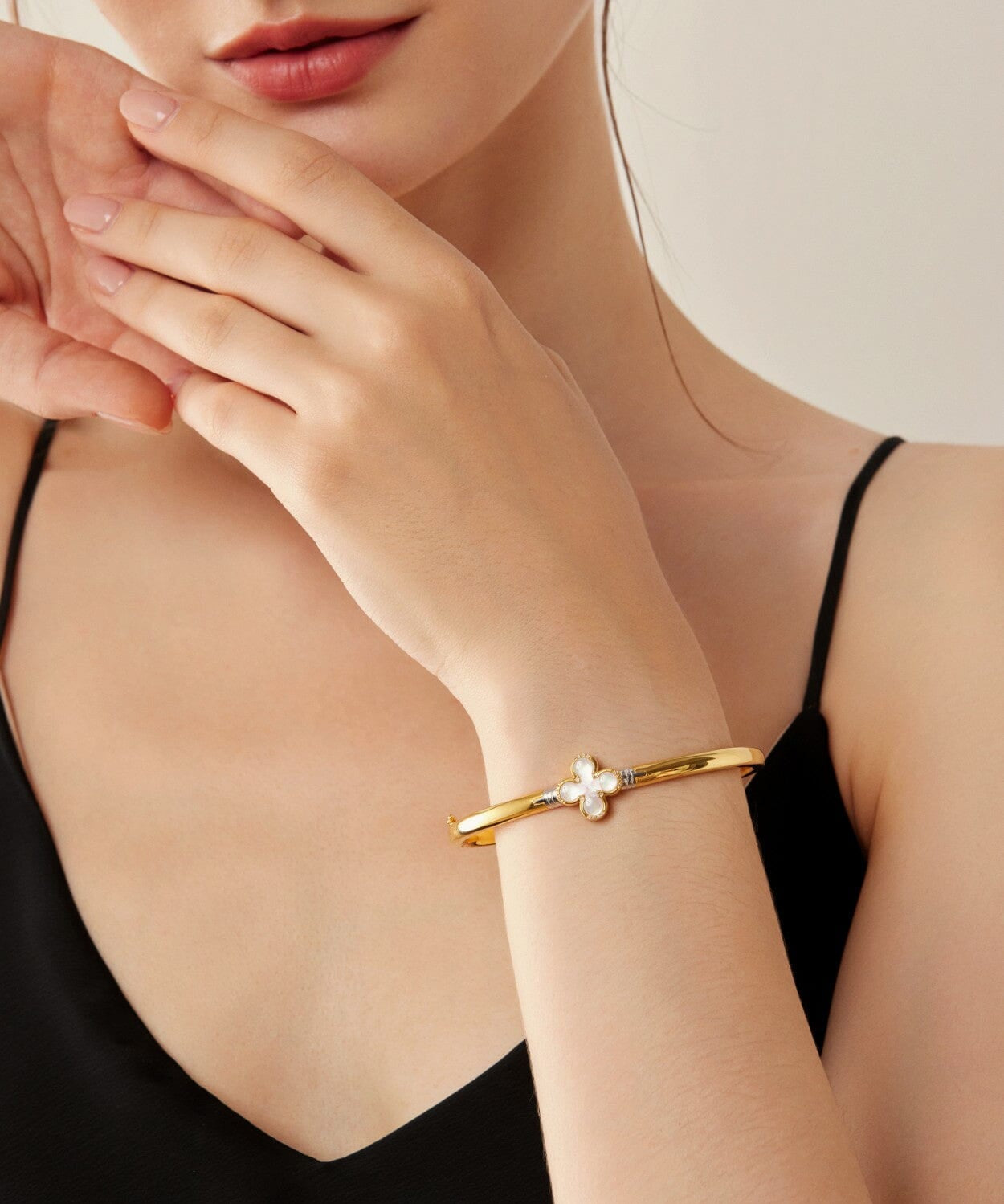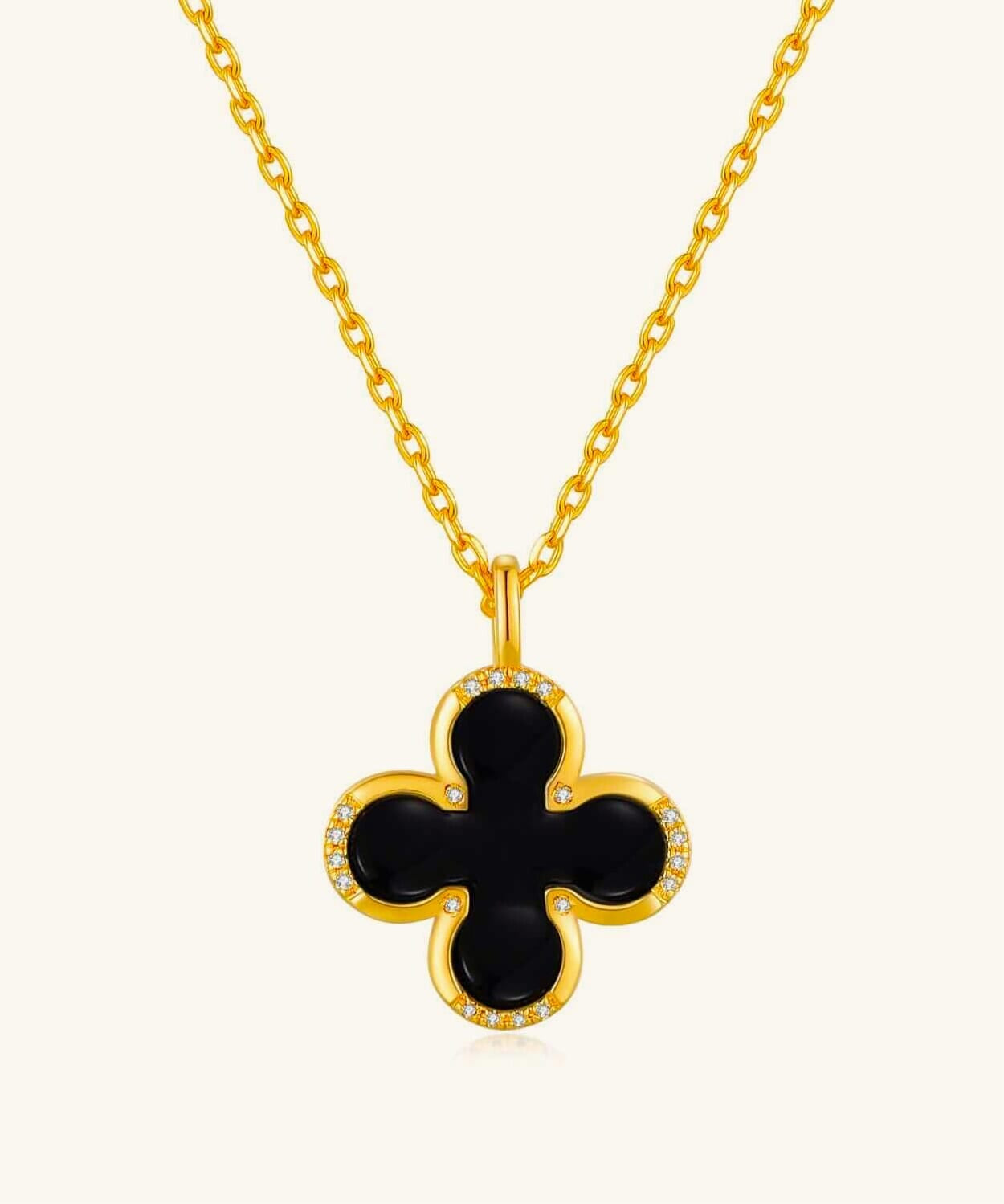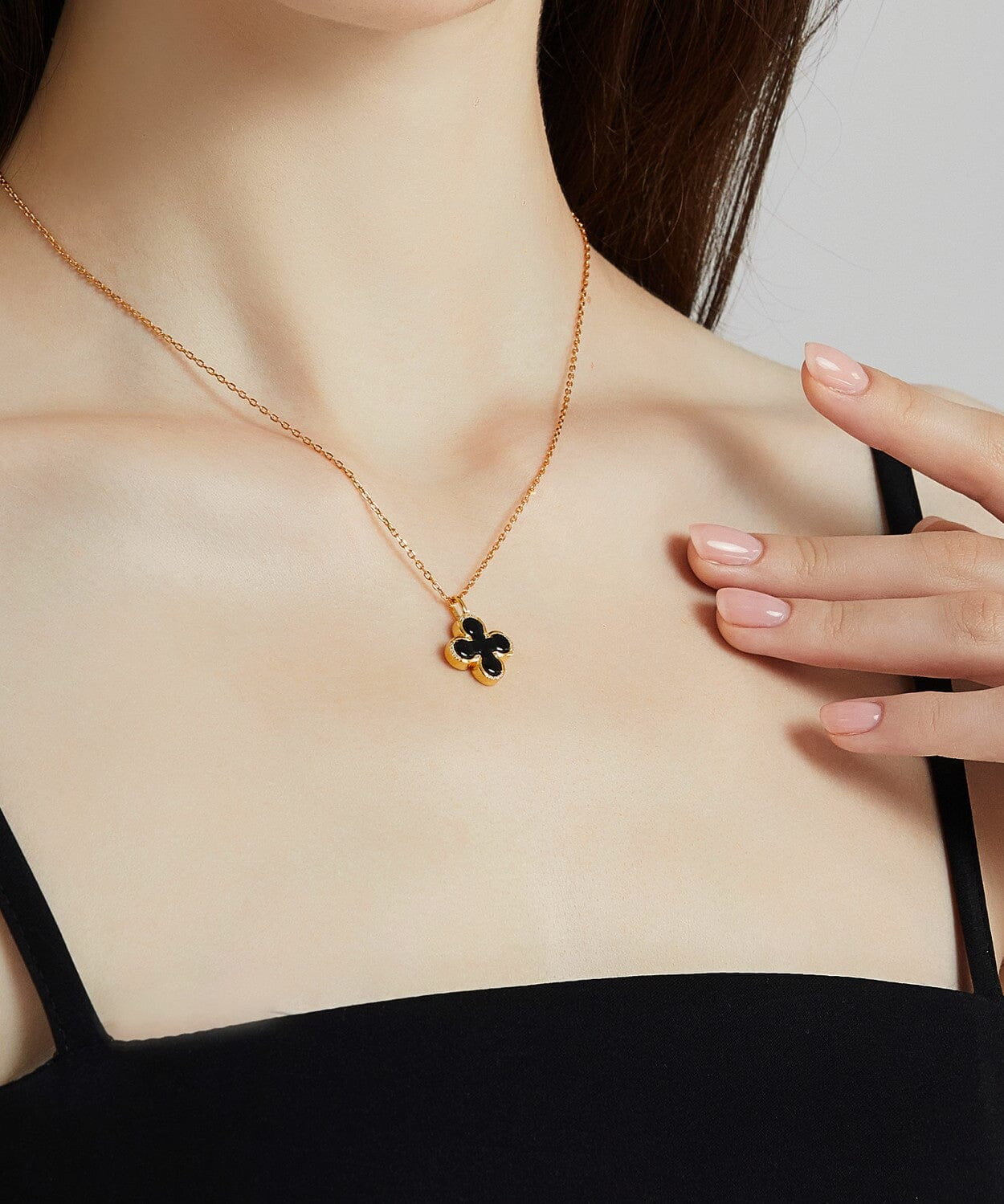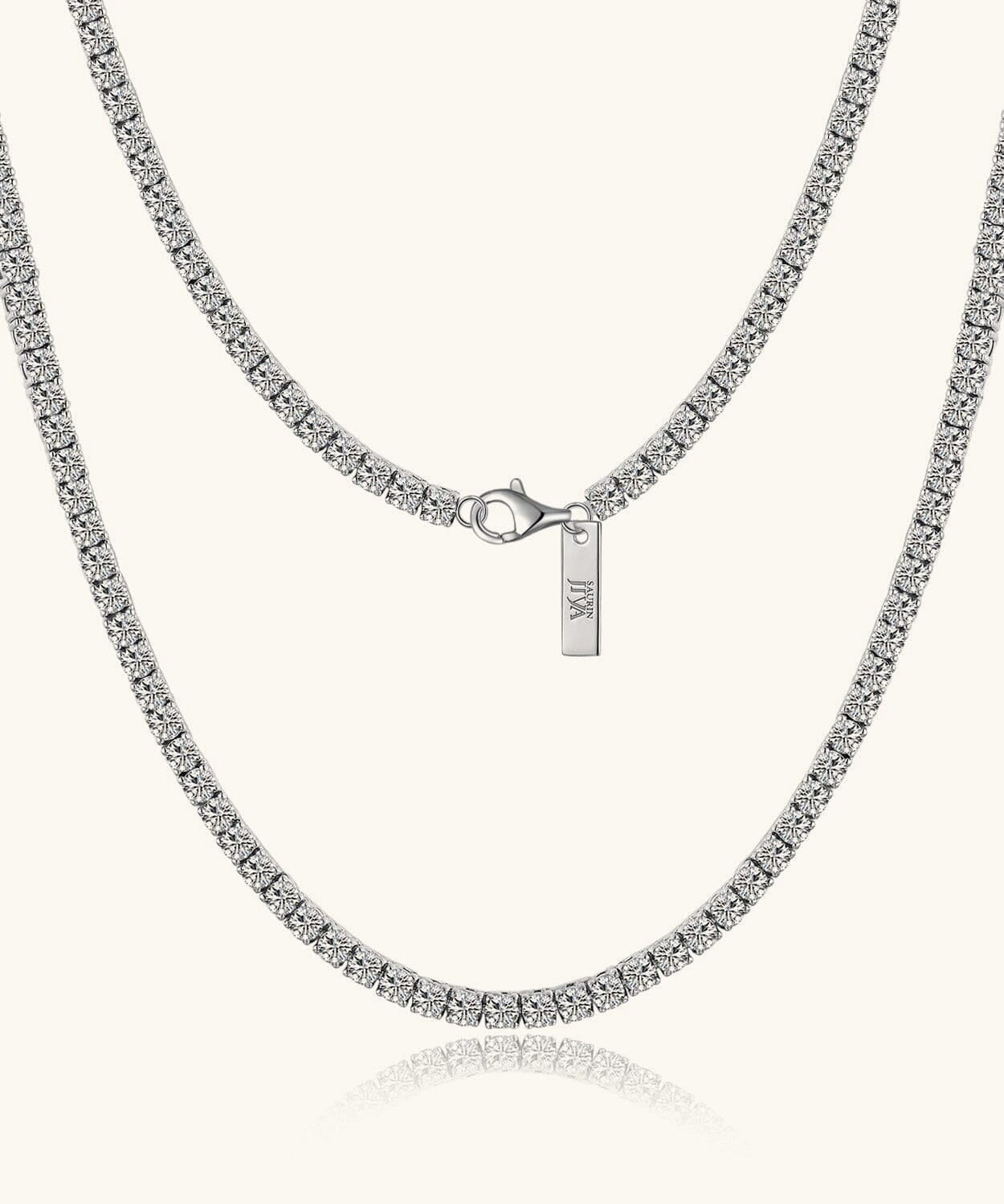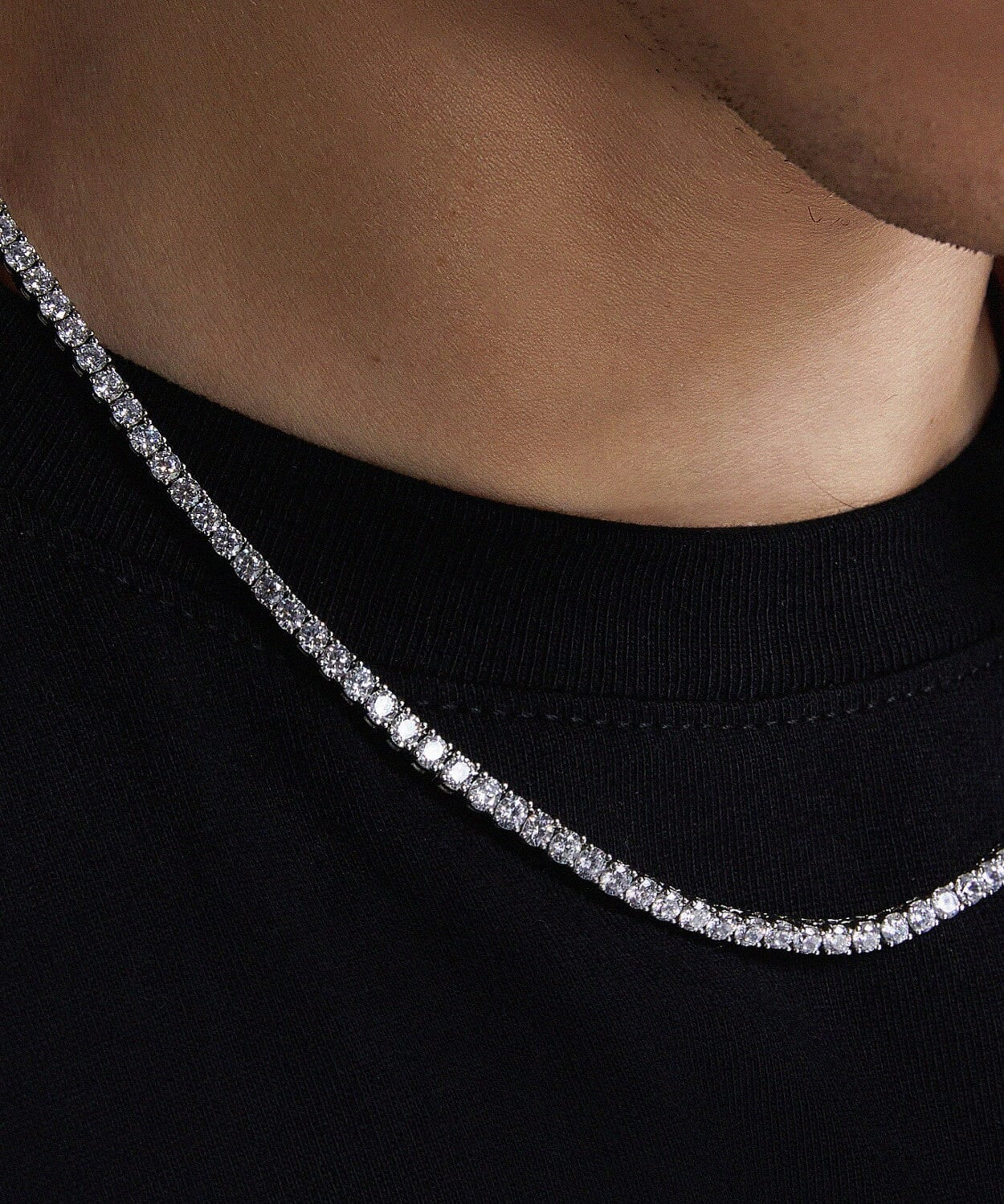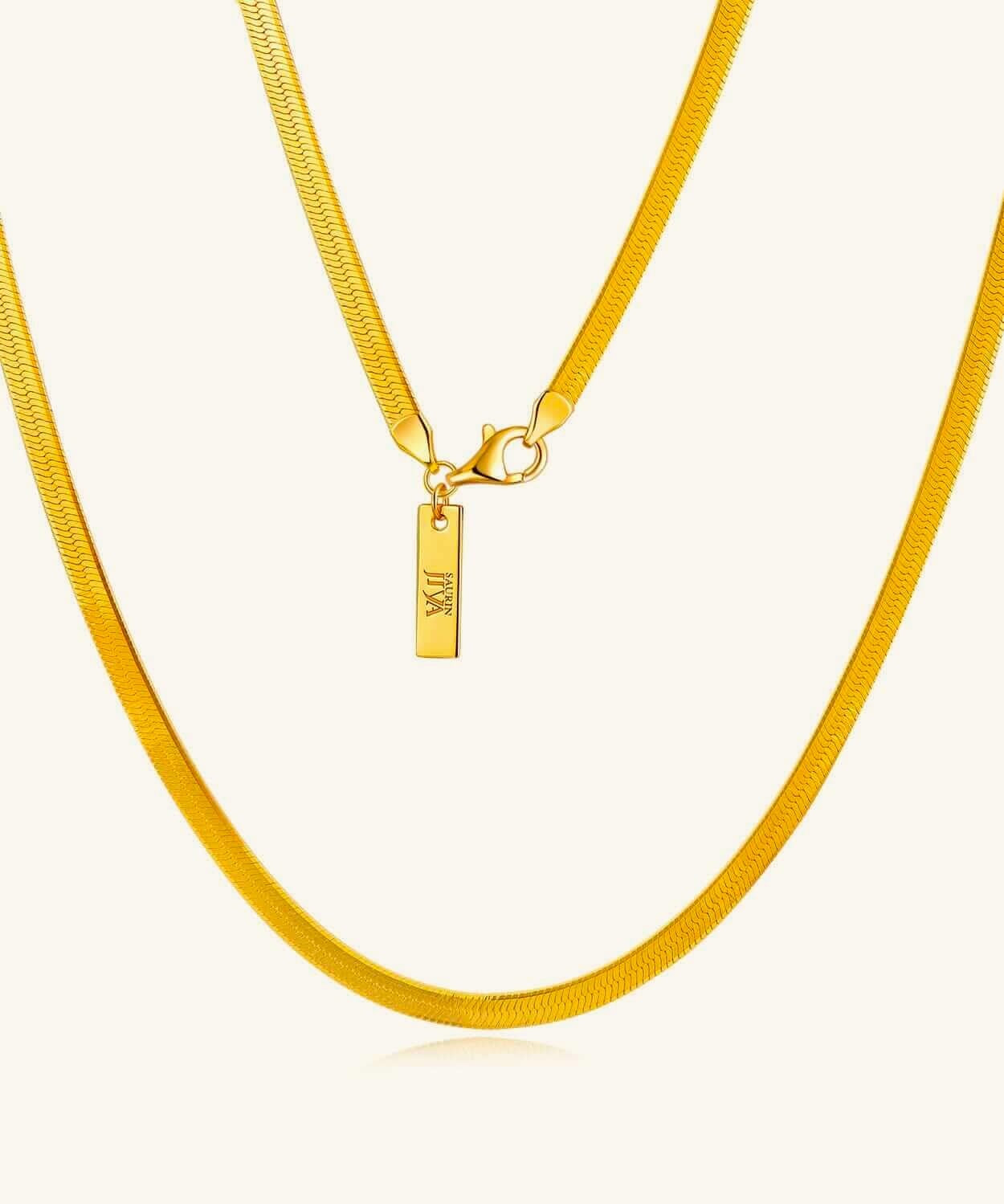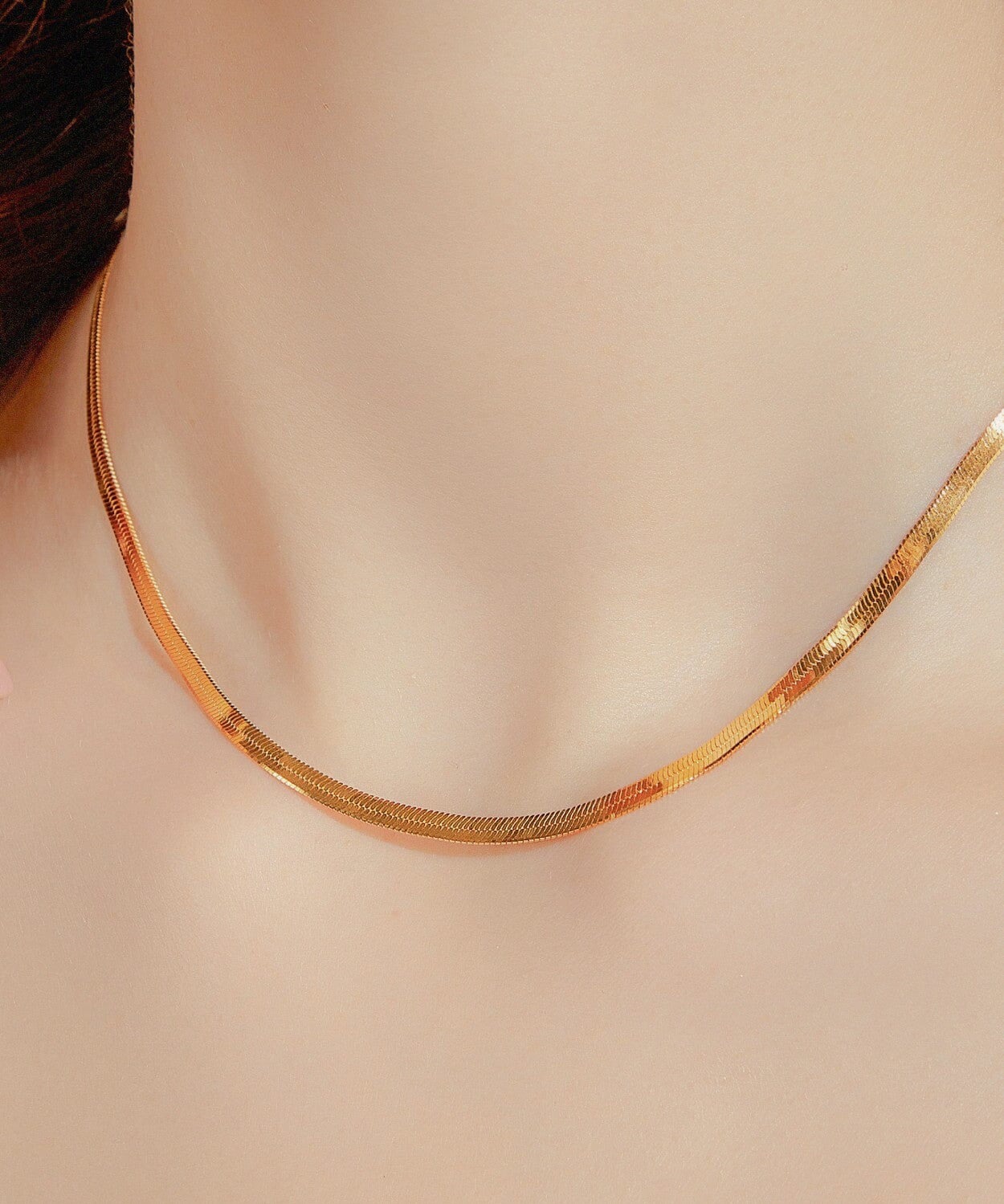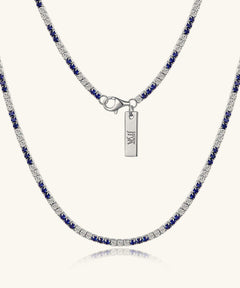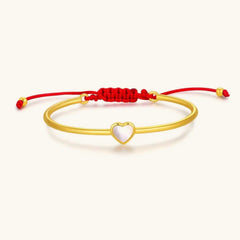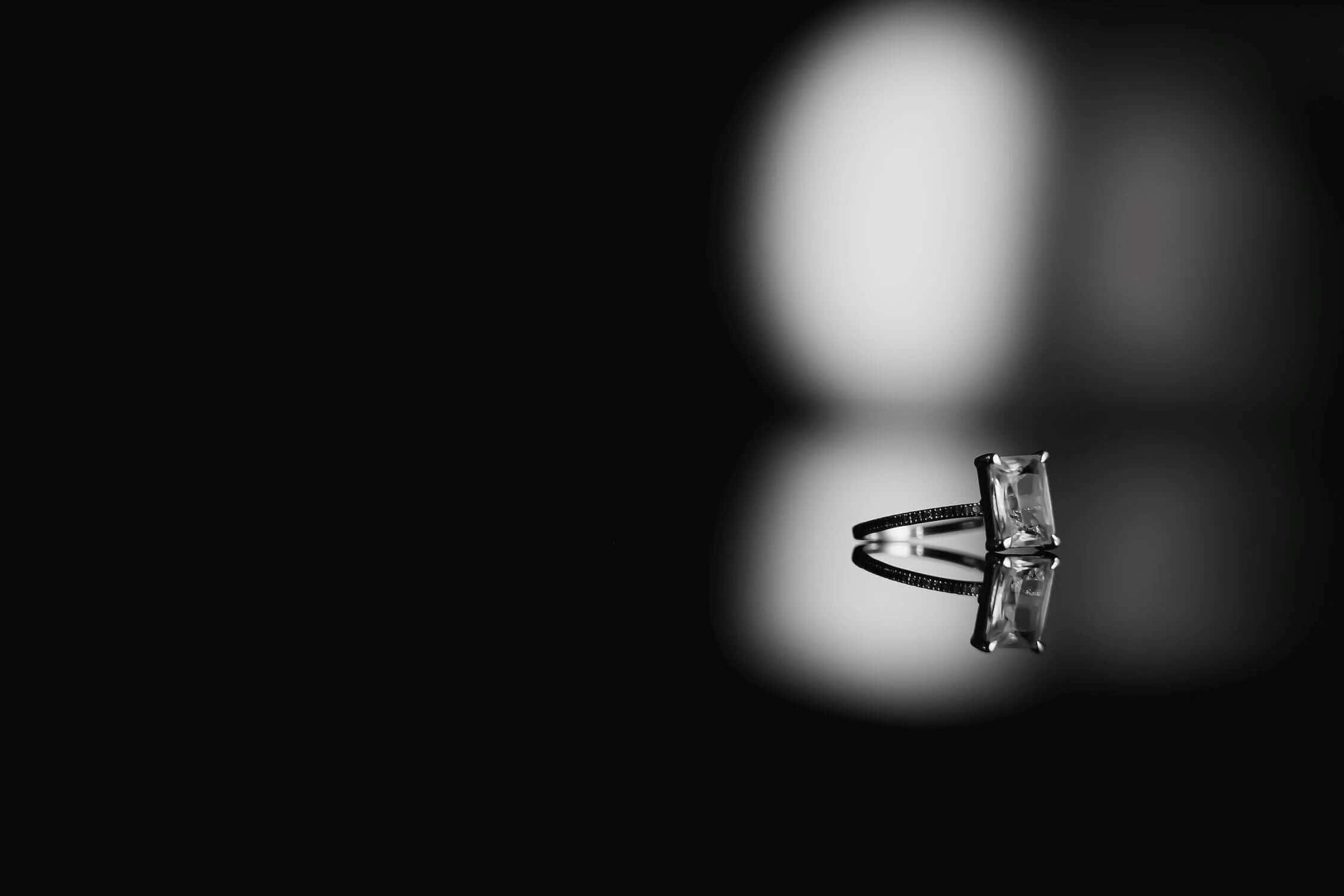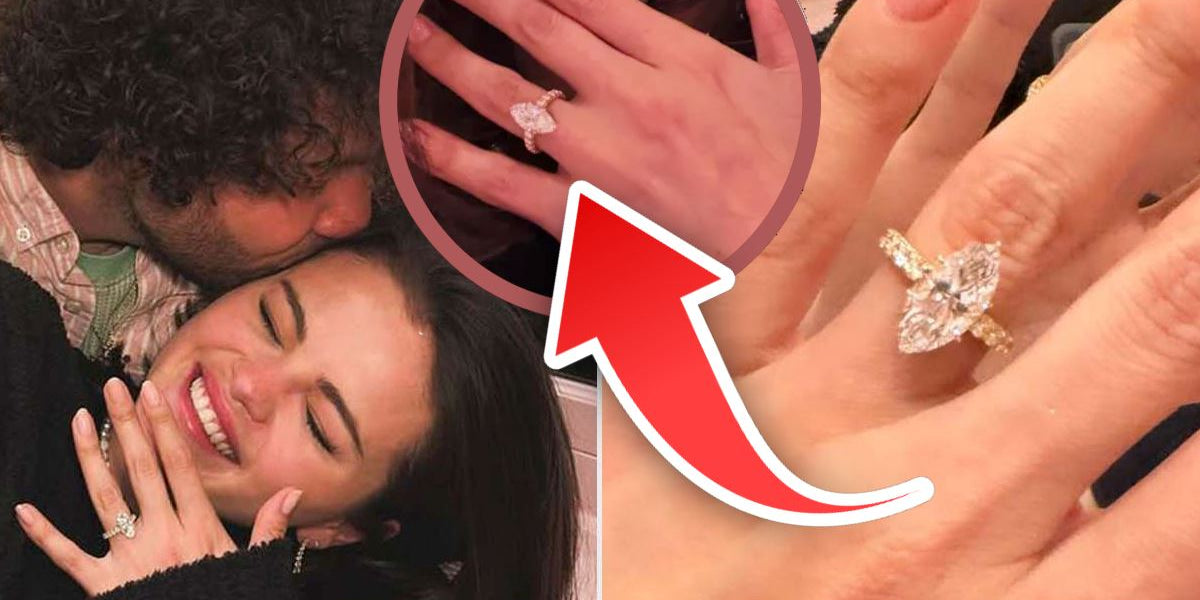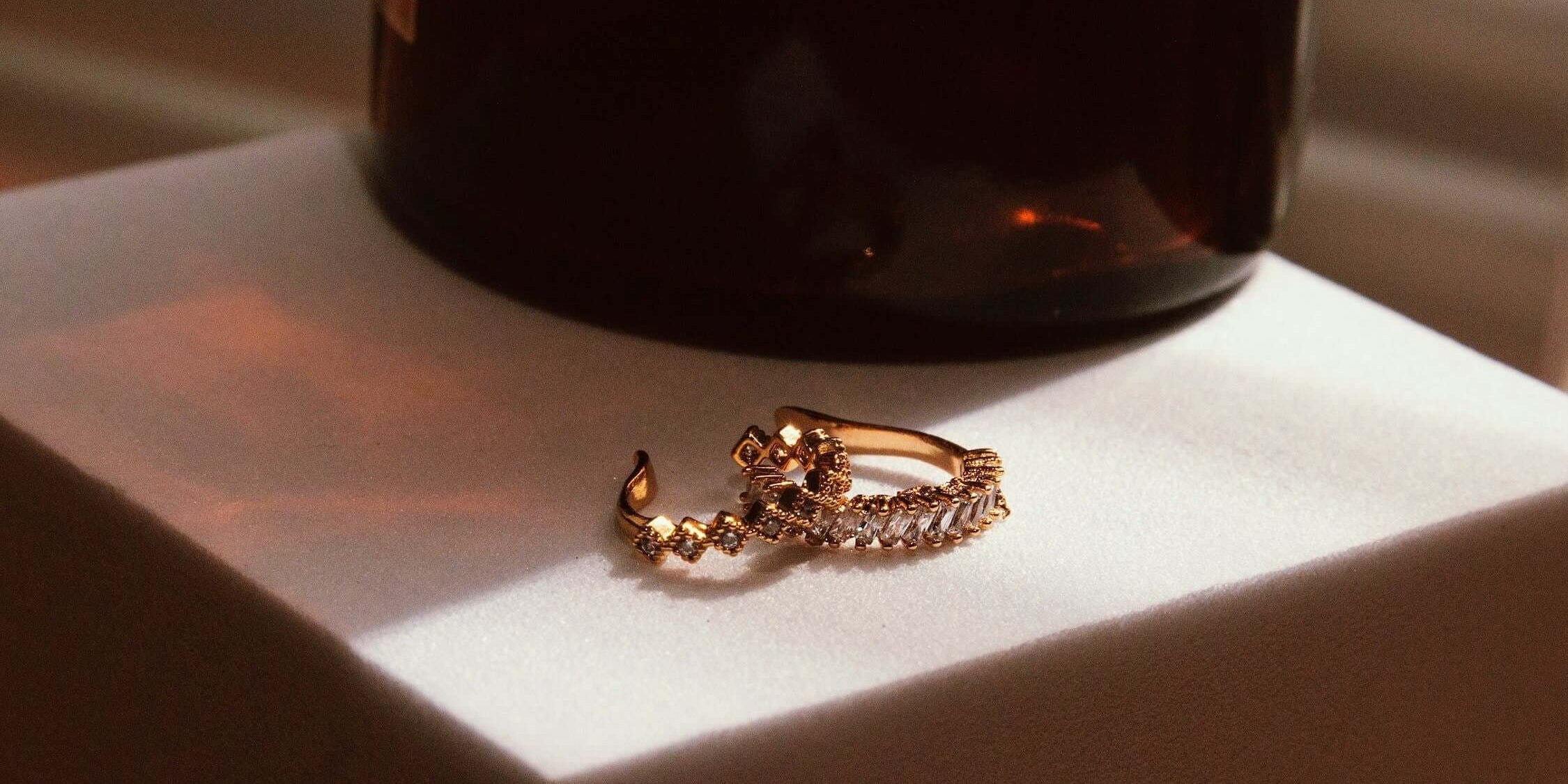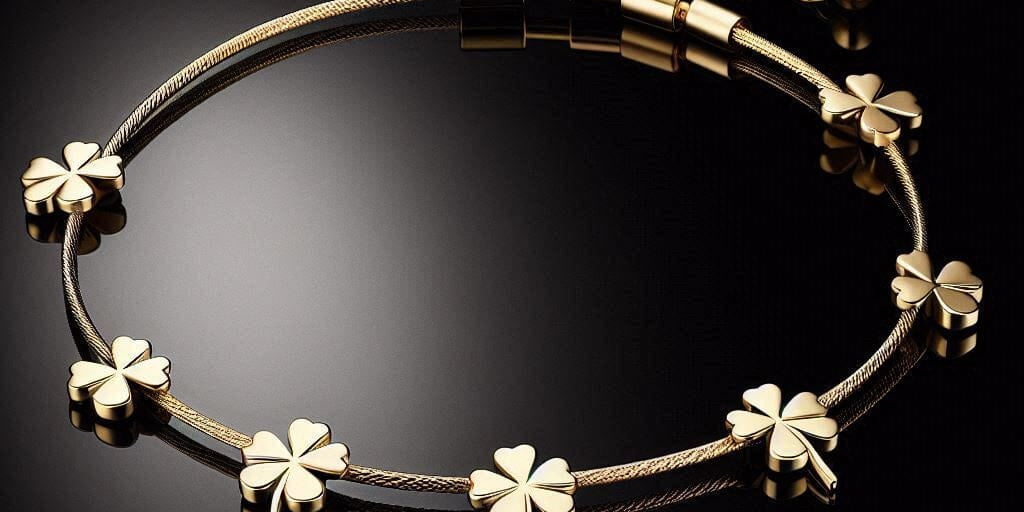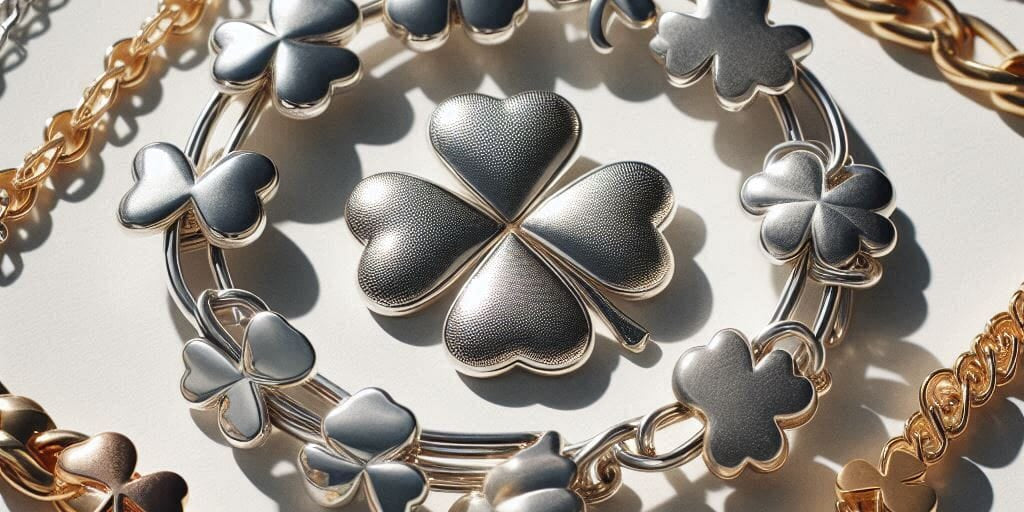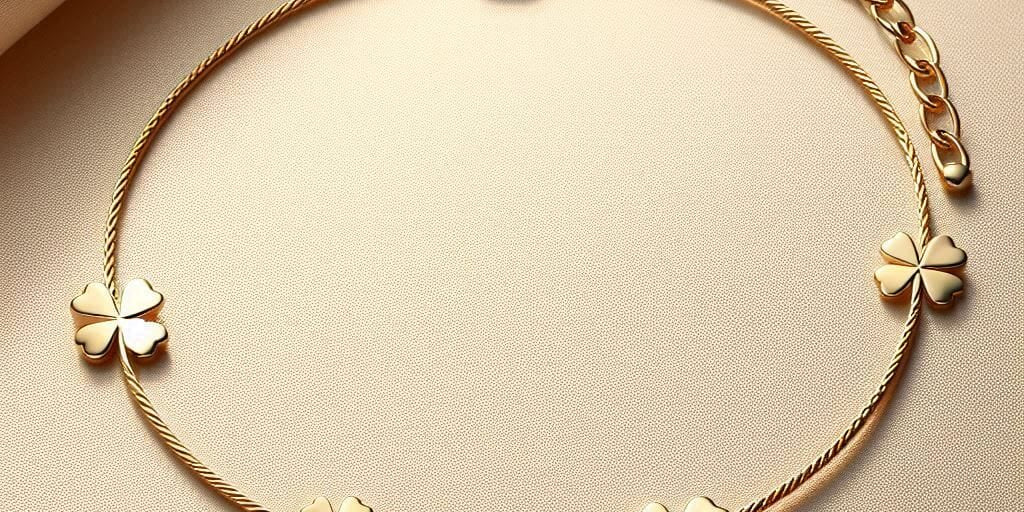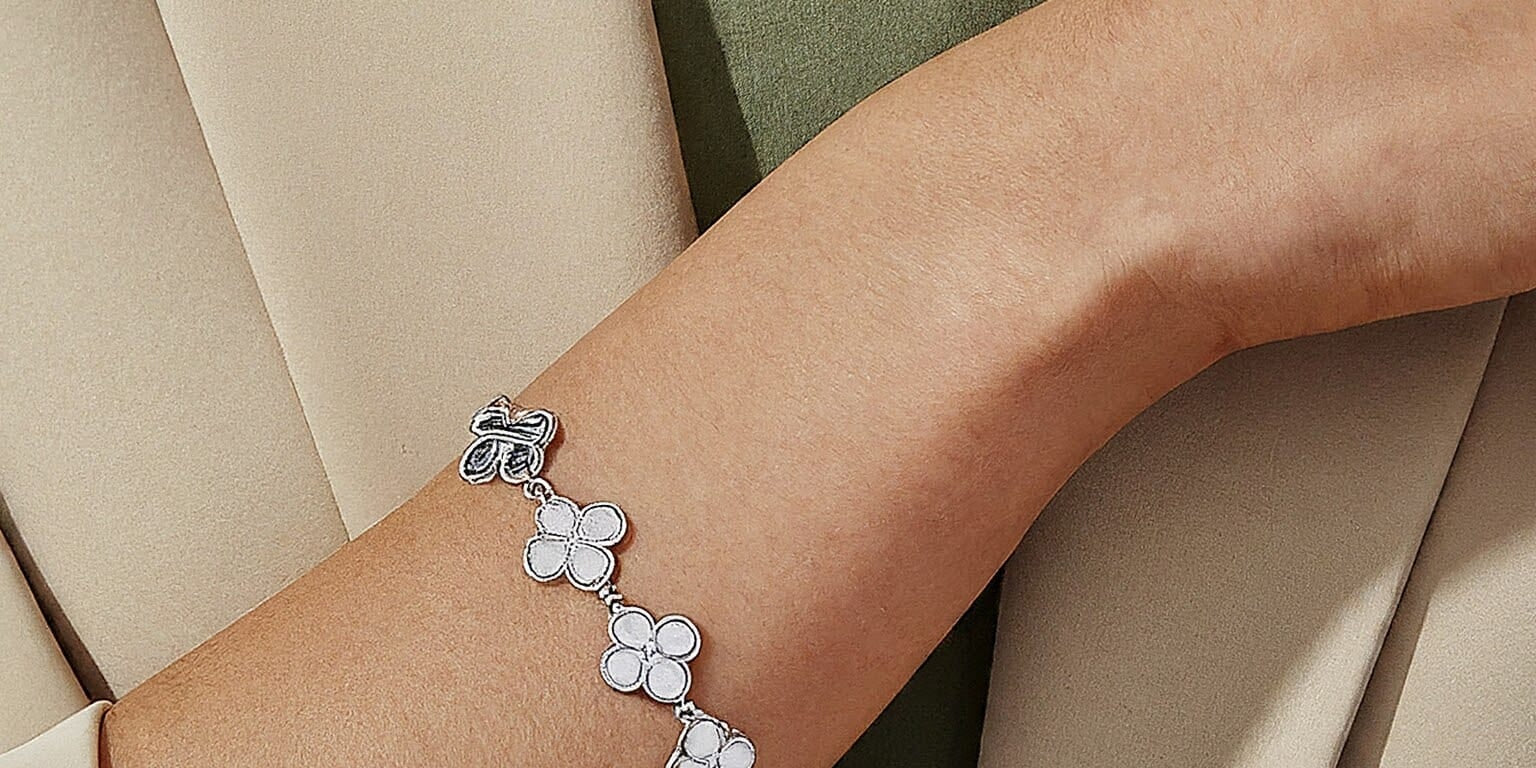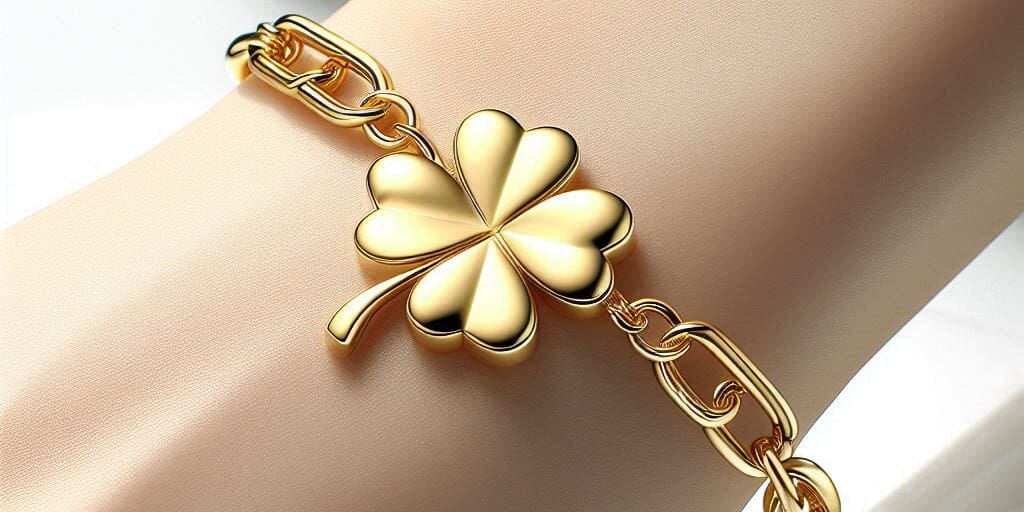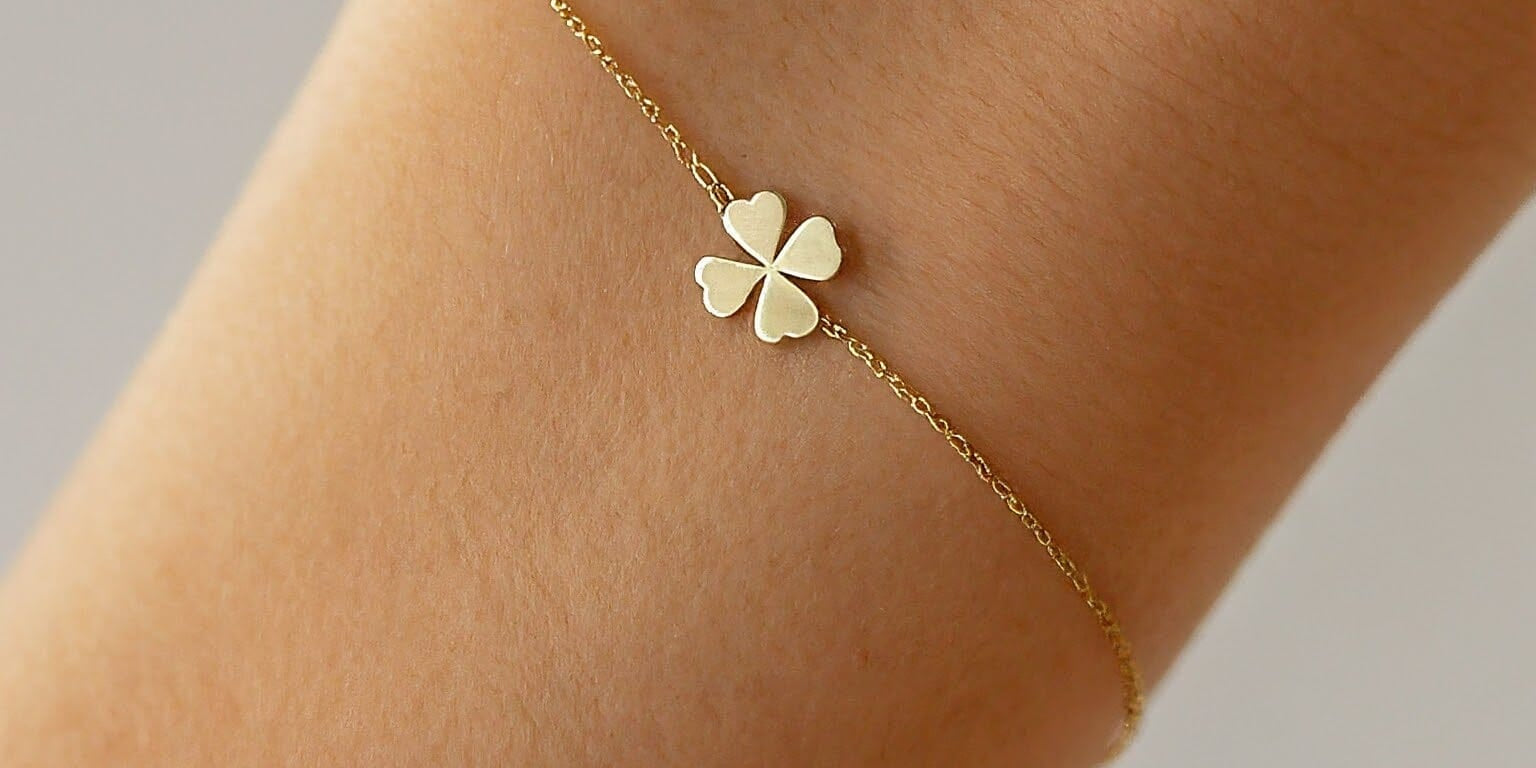The alchemy of luxury fashion accessories transforms raw metals into coveted treasures.
White gold stands as a paragon of this enchanting metamorphosis. Bridging the gap between pure gold's warmth and the allure of platinum's crisp sheen, white gold brings a unique offering to the connoisseur's collection—as sought-after as its golden progenitor, yet distinct in hue, white gold commands a presence that is both sophisticated and distinctly modern.
Unveiling White Gold's Identity
White gold, in its essence, is gold alchemized through an intricate melding of elements to yield a metal of lustrous éclat. It is the artful amalgamation of pure gold with alloying metals such as palladium, nickel, or silver, that imparts to it a pallid hue—evocative of the moon's ethereal glow—capable of elevating any luxury fashion accessory into a bastion of contemporary elegance.
In revealing white gold's identity, we acknowledge its place in the lineage of precious metals. Designed to marry the intrinsic value of gold with the durability imparted by its alloys, white gold stands as a "modern classic." Its subtle sheen plays well with both diamonds and colored gemstones, offering versatility unparalleled. At its core, the radiance of white gold is the harmonious balance of timeless value and cutting-edge aesthetic—an alliance that ensures its perennial position within the pantheon of luxurious adornments.
Defining the Allure of White Gold
White gold symbolizes a union of tradition and innovation, offering a gleaming backdrop that accentuates gemstones to mesmerizing effect. This alabaster-toned alloy resonates with those who covet a cooler spectrum of opulence.
Venturing into the delicate dance of metallurgy, white gold emerges through a sophisticated blending of noble metals. Resulting in a striking silvery sheen, it elegantly sidesteps the lustrousness of yellow gold while maintaining that coveted auric prestige.
White gold, an emblem of sophistication, shines brightest in contemporary jewelry design.
As an alloy, white gold also celebrates functionality; it promises resilience against wear and tear. A modern talisman of chic durability, it offers an avant-garde edge that complements a diverse array of designs—from the understated to the flamboyant—without forsaking the weight of gold's heritage.
The Primary Uses in Modern Jewelry
White gold's prevalence in bridal jewelry is undoubtedly prominent. Its pristine hue elevates engagement rings to poignant symbols of love.
Adorning the wrists, necks, and ears of the fashion-forward, white gold serves as the canvas for everything from minimalist designs to elaborate statement pieces. Its cool luster provides a contemporary contrast to the warmth of yellow gold, crafting a dichotomy that appeals to varied aesthetic preferences. Furthermore, its neutral tone ensures seamless pairing with an array of precious gemstones, including diamonds, which are exquisitely complemented by its understated elegance.
The popularity of white gold extends to timepieces, where its versatility shines. It serves foundations for elaborate engravings and delicate filigree, supporting complex craftsmanship without detracting from intricate detailing. Its ability to mesh with other metals allows for unique alloy combinations, enhancing the allure of luxury watches.
Accessories and objets d'art fashioned from white gold also captivate discerning collectors. Its resistance to tarnishing preserves the integrity of designs, allowing for the creation of artifacts that bear the patina of time with grace. Catering to both utilitarian and decorative desires, white gold elevates personal adornment and enriches the refined collection with its enduring luminescence.
White Gold's Unique Alloy Composition
White gold stands as a distinguished member of the precious metals family, owed to its unique composition which typically melds pure gold with metals like palladium or nickel. These additional alloys not only bestow upon it a radiant paleness but also imbue the metal with amplified durability. The presence of these metals dictates the final hue and strength, culminating in an elegant material that adroitly bridges the gap between luxury and resilience. It is this intricate balance that has garnered white gold its esteemed status amongst connoisseurs of fine jewelry.
Metals That Give White Gold Its Color
The silvery sheen of white gold is predominantly a result of amalgamating gold with certain white metals.
- Palladium: A white metal enhancing the whiteness and durability.
- Nickel: Commonly added for strength, though less often now due to allergies.
- Silver: Contributes to the alloy's strength and color.
- Platinum: Occasionally added for weight and a richer white tone.
This blend imbues the alloy with the necessary characteristics to meet the demands of fine jewelry.
Cheaper alternatives like rhodium plating are often employed to enhance white gold's reflective luster and surface durability.
The Science Behind Its Durability
The alloying process for white gold is not merely about aesthetics; it's about creating a composition that can withstand the rigors of daily wear. This is where the science of metallurgy shines, lifting the robustness of white gold to a standard befitting its luxury status.
Alloys enhance tensile strength, making white gold less prone to deformation. Such durability is essential for jewelry that is worn regularly and is subject to the usual wear and tear.
Palladium, for instance, imbues white gold with not only a desirable color but also exceptional resistance to corrosion and oxidation, ensuring the jewelry's longevity. This metal's hypoallergenic properties further contribute to white gold's suitability for sensitive skin.
The incorporation of platinum group metals into white gold alloys bestows upon the material remarkable density and endurance. These metals, recognized for their impressive hardness and resistance to tarnish, enable white gold jewelry to retain its pristine condition over extended periods. As such, white gold represents a felicitous choice for those seeking a synthesis of elegance and enduring substance in their adornments.
Comparing White and 24K Gold Filled Jewelry
When examining white gold alongside 24K gold filled jewelry, the variances are rather striking. White gold emanates a sophisticated, silvery sheen due to its alloy composition, which often includes metals like palladium or nickel. On the other hand, 24K gold filled jewelry boasts a luxurious, radiant warmth that only high-purity gold can impart, encased in a durable bond to a supportive base metal. This contrast is not just visual but also tactile, with gold filled pieces offering a substantial feel akin to solid gold without the exorbitant price. Care considerations diverge as well; white gold may require re-plating over time to maintain its luster, whereas 24K gold filled jewelry sustains its brilliance with minimal upkeep, making it a pragmatic yet opulent choice for discerning collectors.
Aesthetic Differences in the Spotlight
White gold presents a cooler hue, often compared to the moon's gentle luminescence, while 24K gold filled radiates warmth akin to the sun's golden rays.
- White Gold: A muted, sleek elegance that complements diamonds and cooler-toned gemstones
- 24K Gold Filled: Rich, vibrant golden tones that enhance the lustre of precious stones and stand out with a bolder presence
The distinction in color palette between the two extends beyond mere preference, influencing wardrobe choices and color harmonies.
24K gold filled jewelry retains its luster indefinitely, bypassing the need for the additional maintenance white gold requires, ensuring its aesthetic longevity.
Durability and Maintenance Face-Off
White gold requires meticulous care, including routine rhodium plating to retain its silvery sheen.
- Re-plating: White gold must undergo periodic rhodium re-plating to combat wear and preserve its color and luster.
- Scratch Resistance: Due to its alloys, white gold tends to be harder and more scratch-resistant than pure gold.
- Maintenance: In contrast, 24K gold filled jewelry demands far less maintenance, eschewing the need for re-plating.24K gold filled jewelry champions enduring vibrancy and resilience, with only simple cleaning needed.Given its practicality, 24K gold filled jewelry emerges not only as an elegant but also as a low-maintenance luxury.
Decoding the Value for Jewelry Enthusiasts
For connoisseurs and aficionados alike, understanding the intrinsic worth of various jewelry compositions is paramount. White gold, an alloy embellished for its cooler hue, often comes with hidden future expenditures on maintenance to sustain its radiance. Conversely, 24K gold filled jewelry presents an unrivaled proposition, combining the opulent appearance of solid gold with the resilience of base metals, thus offering aficionados a sumptuous yet economically prudent choice. Herein lies the true artistry of luxury: delivering both sumptuous appeal and long-term value—characteristics that resonate deeply with discerning jewelry enthusiasts.
Affordability Versus Investment Potential
The allure of white gold resides in its refined façade, yet it masks a costlier reality. Contrastingly, 24K gold filled jewelry excels in coupling affordability with luxury.
Invest in 24K gold filled jewelry and embrace both sumptuousness and thrift.
24K gold filled jewelry is constructed to withstand the test of time, shunning the frequent refurbishments that often besiege white gold pieces. It stands as a paragon of value, blending the aesthetic of pure gold with the fortitude of a core alloy—a solid investment in fashion and functionality.
Nestled within the heart of 24K gold filled jewelry's appeal is a balance rare in luxury: the aspiration for timeless beauty meets a judicious financial choice. It beckons like a siren, calling the judicious to a realm where elegance is without an expiration. Adorning oneself with 24K gold filled jewelry is a testament to astute style consciousness, a hallmark of those who discern 'forever' from fleeting trends.
Choosing Based on Lifestyle and Fashion Preferences
For the sartorially savvy, your jewelry must interact seamlessly with an ever-evolving wardrobe, transcending simple accessorization to become part of your signature style. Thus, opting for 24K gold filled jewelry is a strategic stylistic decision—allowing for unrivaled versatility and enduring appeal.
Consider the rigors of daily wear and the necessity for resilient fashion. 24K gold filled jewelry effortlessly meets these demands with aplomb.
Indeed, those who lead an active lifestyle will appreciate the robustness and low maintenance of 24K gold filled pieces, harmonizing durability (owing to its substantial gold layer attached to the base metal) with uninterrupted elegance.
Those with a penchant for ostentatious displays may naturally gravitate towards the lustrous sheen of pure gold. Yet, 24K gold filled jewelry offers a comparable glint and grandeur without the accompanying price tag, creating a more accessible route to opulence.
In contrast, aficionados of understated chic may find the soft luster of white gold alluring; however, the prospect of regular upkeep can be daunting. 24K gold filled jewelry mitigates such concerns, allowing for a subdued yet sophisticated aesthetic without the frequent need for re-plating or polishing.
Ultimately, your choice should echo your lifestyle's tempo and your sartorial leanings. 24K gold filled jewelry presents a pragmatic and stylish solution, resonating with those who prefer their elegance both effortless and everlasting.
In conclusion, white gold represents the pinnacle of sophistication in the world of luxury jewelry. Its exquisite beauty, durability, and versatility make it a timeless choice for those seeking elegance and refinement. With proper care, a white gold piece can become a treasured symbol of enduring luxury and style.
How is white gold different from regular gold?
White gold is a captivating variation of the renowned yellow gold. While both white gold and regular gold share the same base metal, which is gold itself, there are significant differences in their composition and appearance.
The distinction between these two exquisite metals lies in the alloys blended with pure gold. Regular gold, also known as yellow gold, is created by combining gold with metals such as copper and silver. This blend gives yellow gold its warm and lustrous appearance.
On the other hand, white gold is achieved by combining gold with a mixture of white metals such as palladium, nickel, or silver. These alloys help to achieve the desired silvery hue of white gold. In many cases, a rhodium plating is applied to enhance the white color and give it a brilliant sheen.
The choice between yellow gold and white gold ultimately depends on personal preference. White gold offers a contemporary and elegant look, making it a preferred choice for many jewelry enthusiasts. Additionally, white gold beautifully complements diamonds and other gemstones, enhancing their brilliance and sparkle.
It is important to note that white gold may require occasional re-plating with rhodium as the plating can wear off over time. This maintenance ensures that the white gold retains its stunning appearance over the years.
In summary, while yellow gold exudes a traditional and timeless charm, white gold offers a modern and stylish alternative. Understanding the differences between these two metals helps in making an informed decision when selecting the perfect piece of jewelry to add to your collection.
Key Points:
Understanding White Gold:
- White gold is a gold alloy mixed with other metals to achieve its white color.
- It is commonly used in various types of jewelry.
- Metals like nickel, palladium, or silver are mixed with gold to create white gold.
Comparison with 24K Gold Filled Jewelry:
- White gold has a white color, while 24K gold filled jewelry has a rich yellow color.
- White gold is known for its durability, while 24K gold filled jewelry requires less maintenance.
- Both options offer different aesthetics and maintenance requirements.
The Affordability of 24K Gold Filled Jewelry:
- 24K gold filled jewelry is generally more affordable than white gold.
- It provides the luxury of fine jewelry at a more accessible price point.
- 24K gold filled jewelry can still be considered a luxury investment.
Long-Term Investment Value:
- 24K gold filled jewelry has the potential to retain its value over time.
- With proper care, it can be considered a lifetime investment.
- It offers enduring style and quality.
Aesthetics and Versatility:
- 24K gold filled jewelry has a rich yellow color that adds a touch of luxury.
- It is versatile and suitable for various styles and occasions.
- Its lustrous appearance and fine craftsmanship make it visually appealing.
FAQ
Welcome to our FAQ section where we address common questions about white gold and 24K gold filled jewelry.
Understanding White Gold
What is white gold?
White gold is a gold alloy mixed with other metals to achieve its white color, commonly used in jewelry making as an alternative to traditional yellow gold.
What are the typical uses of white gold in jewelry?
White gold is commonly used to create various types of jewelry, including rings, necklaces, bracelets, and earrings, and is a popular choice for engagement rings and wedding bands.
What metals are mixed with gold to create white gold?
To achieve its white color, white gold is typically mixed with metals such as nickel, palladium, or silver, giving it its desired appearance.
Comparison with 24K Gold Filled Jewelry
How does white gold compare to 24K gold filled jewelry in terms of color?
White gold has a white color due to the metals mixed with gold, while 24K gold filled jewelry has a rich yellow color, allowing for different aesthetic preferences.
Which is more durable, white gold or 24K gold filled jewelry?
White gold is known for its durability and strength, making it suitable for everyday wear, while 24K gold filled jewelry is also durable but may require more care to maintain its appearance over time.
How do white gold and 24K gold filled jewelry differ in terms of maintenance?
White gold may require occasional rhodium plating to maintain its bright white color, while 24K gold filled jewelry typically requires less maintenance, with regular cleaning and polishing recommended for both types.
The Affordability of 24K Gold Filled Jewelry
Is 24K gold filled jewelry more affordable than white gold?
Yes, 24K gold filled jewelry is generally more affordable than white gold, offering the luxury of fine jewelry at a more accessible price point.
Can 24K gold filled jewelry be considered a luxury investment?
Absolutely, 24K gold filled jewelry may be more affordable than white gold, but it still represents a fine luxury investment with enduring style and quality.
Long-Term Investment Value
Does 24K gold filled jewelry retain its value over time?
Yes, 24K gold filled jewelry has the potential to retain its value over time, crafted with high-quality materials and offering long-term durability.
Is 24K gold filled jewelry considered a lifetime investment?
Yes, with proper care and maintenance, 24K gold filled jewelry can be considered a lifetime investment, retaining its beauty and value for years to come.
Aesthetics and Versatility
What makes 24K gold filled jewelry aesthetically appealing?
24K gold filled jewelry has a rich yellow color that is highly desirable, adding a touch of luxury to any outfit, with its lustrous appearance and fine craftsmanship.
Is 24K gold filled jewelry versatile in terms of style and occasions?
Yes, 24K gold filled jewelry is versatile and can be worn for various styles and occasions, adding elegance and sophistication to any ensemble.
Making the Right Choice
How can I choose between white gold and 24K gold filled jewelry?
When choosing between white gold and 24K gold filled jewelry, consider your lifestyle, budget, and fashion preferences to make the right choice that suits your needs.
We hope these FAQs have provided helpful insights into white gold and 24K gold filled jewelry. If you have any further questions, feel free to reach out to us.
